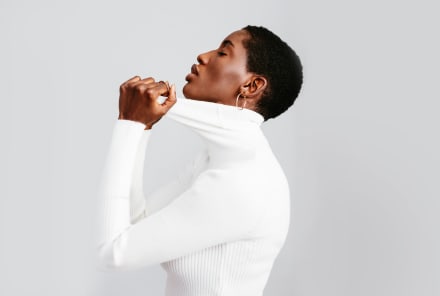Advertisement
A Neuroscientist & Psychiatrist Explains 6 Ways Male & Female Brains Can Differ

As a neuroscientist and psychiatrist who has been using brain SPECT imaging in my practice for over 30 years, I have fielded thousands of queries about the brain. One of the most common questions I get is: "Are there any differences between the male and female brain?"
The quick answer is yes. I know this statement may irritate some people, but hear me out. While brain imaging research shows we are equally smart, our brains are wired differently.
Functional brain scans like SPECT, which measures blood flow and activity in the brain, reveal significant differences between the female brain and male brain. In one of the largest functional brain imaging studies ever, our team at Amen Clinics compared 46,034 brain SPECT scans from more than 25,000 men and women. This study, which appeared in the Journal of Alzheimer's Disease, revealed fascinating differences between the female and male brains.
Before delving into these findings, it is critical to remember that not all female brains are the same just as male brains are not all alike. In addition, more research is needed to provide a deeper understanding of the brains of nonbinary and transgender individuals. What is clear from the existing research is that in general, men and women are all capable of succeeding at various tasks; however, we may call on different brain regions and networks in doing so.
Here are six fascinating differences between the female brain and the male brain:
Women tend to have busier brains.
In our brain imaging study, the Amen Clinics team analyzed 80 brain regions. In 70 of those areas, the scans of female brains revealed significantly higher activity compared with the male brains. Men's brains are a lot more quiet. One pattern is not better than the other; they are just different. For example, in problem-solving, men rely on a localized brainpower while women tend to harness several areas of the brain.
Men tend to have a sleepier prefrontal cortex.
Based on the findings in our study, men tend to have less activity than women in an area of the brain's frontal lobes called the prefrontal cortex (PFC). The PFC plays an important role in forethought, follow-through, and impulse control. Lower activity in the PFC is associated with greater impulsivity, which can make men more likely to take risks in business and in life.
Women have more active emotional brains.
According to our Amen Clinics study, female brains showed higher activity levels in the limbic system, or emotional brain. Situated beneath the cortex, this part of the brain colors our emotions and is involved with bonding, nesting, and emotions. This is associated with greater empathy and may explain why women are often the primary caretakers of children and the elderly.
Empathy allows women to be loving and nurturing, but it can also morph into an overwhelming feeling that you have to take care of everyone before your own needs ever get met. Higher activity in the emotional centers of the brain is also associated with a higher risk of depression and anxiety. A study1 in the Journal of Psychiatry & Neuroscience shows that women are nearly twice as likely as men to experience depression, and other research2 suggests a similar increased risk for anxiety in women.
The anterior cingulate gyrus works differently in men and women.
Within the brain's frontal lobes is an area called the ACG. Known as the brain's gear shifter, it helps you shift attention and recognize errors. Higher activity in the ACG increases the tendency to get stuck on negative thoughts or negative behaviors and to see what is wrong rather than what is right. It is also one of the brain's worry centers. More activity here, which our Amen Clinics study found to be more common in women, translates into more worries. Of course, this doesn't mean that men don't worry or see problems. But men and women tend to worry differently.
When women worry, their busy brains and associative thinking powers kick in, which means one worrisome idea quickly connects with others to build momentum that can snowball out of control. The worry that is so useful in small doses can stress women to the point where it hurts the brain and body and won't allow for rest. Men's worries are more likely to be confined, and they are able to compartmentalize their problems.
The brain's visual and coordination centers are more active in men.
The occipital lobes (located at the back of the brain and involved in vision) and cerebellum (an area at the back, bottom of the brain that is involved in physical coordination) are more active in men. This may explain why men generally might be more adept at judging distances, for example.
Women's intuition lies in the brain, not in the gut.
An area deep in the frontal lobes called the insula is involved in translating external physical sensations and subconscious thoughts that play a role in gut feelings and intuition. The insula is larger in women than in men. The female brain is generally quicker at assessing the thoughts of others based on limited information, gut feelings, and hunches. Intuition enables women to quickly grasp information that may not be obvious or easy to justify through logic. Intuition can awaken anxiety-provoking fears as you "know" something is not right without making sure to check it out or get more information.


















